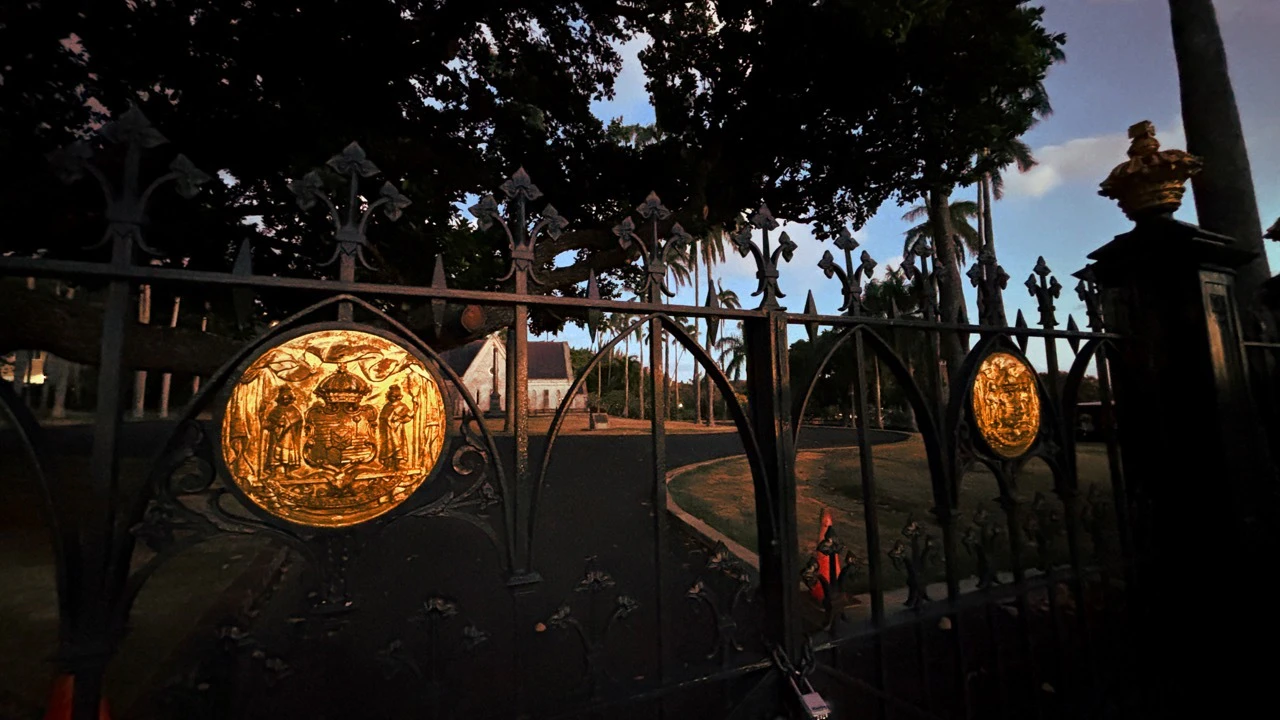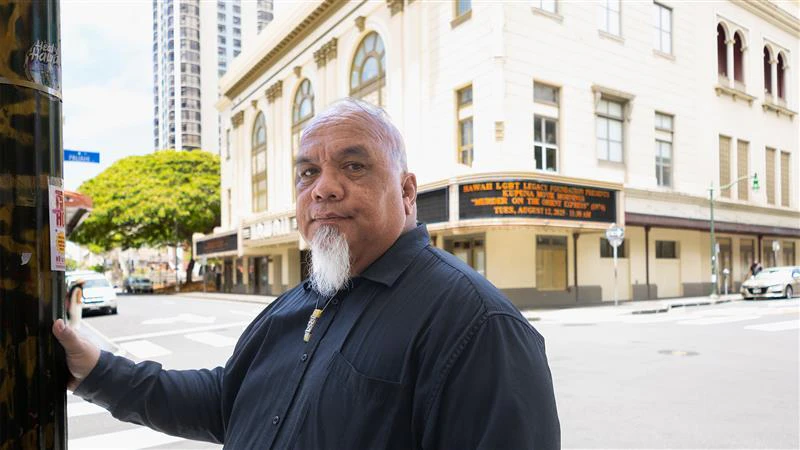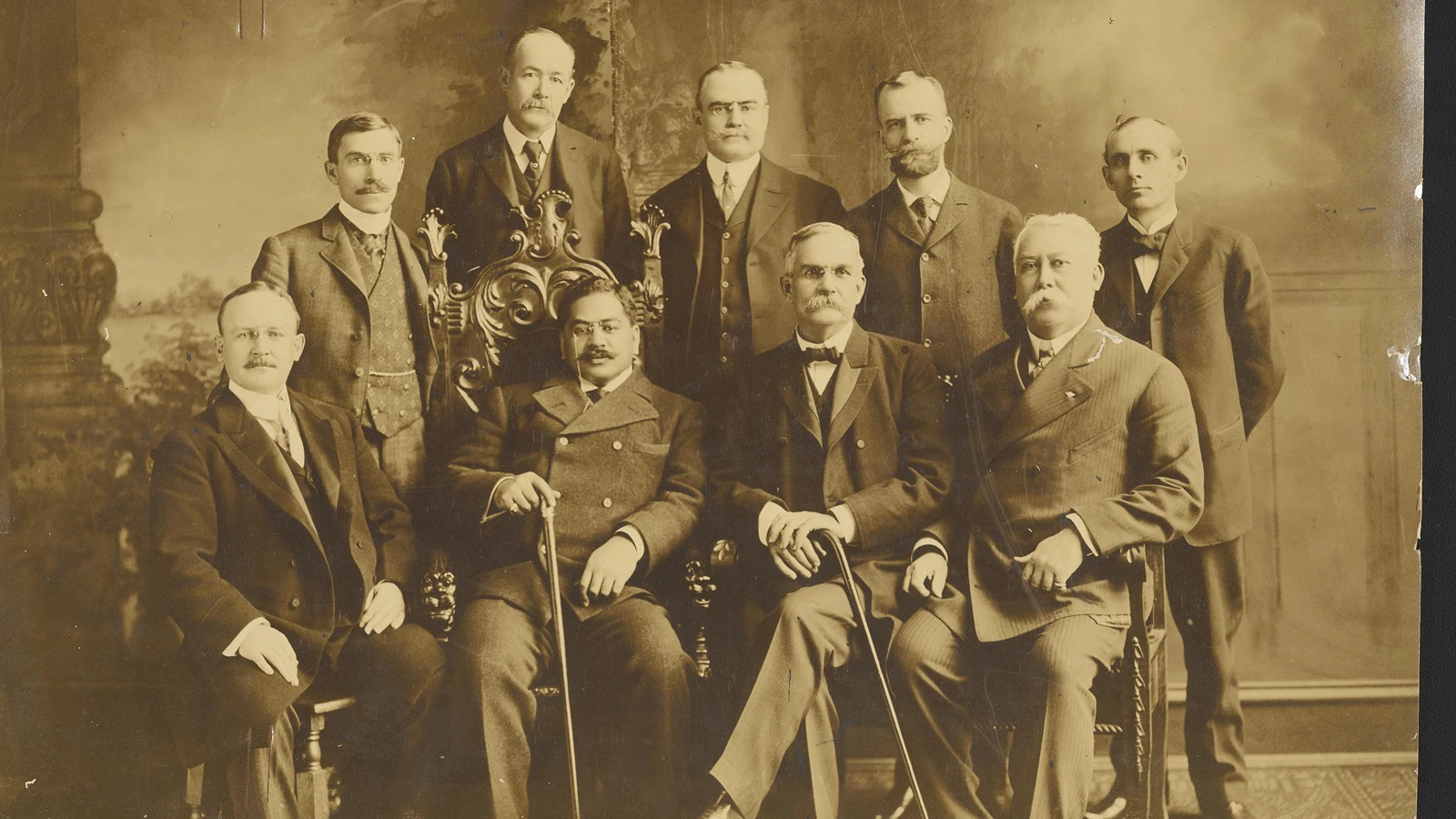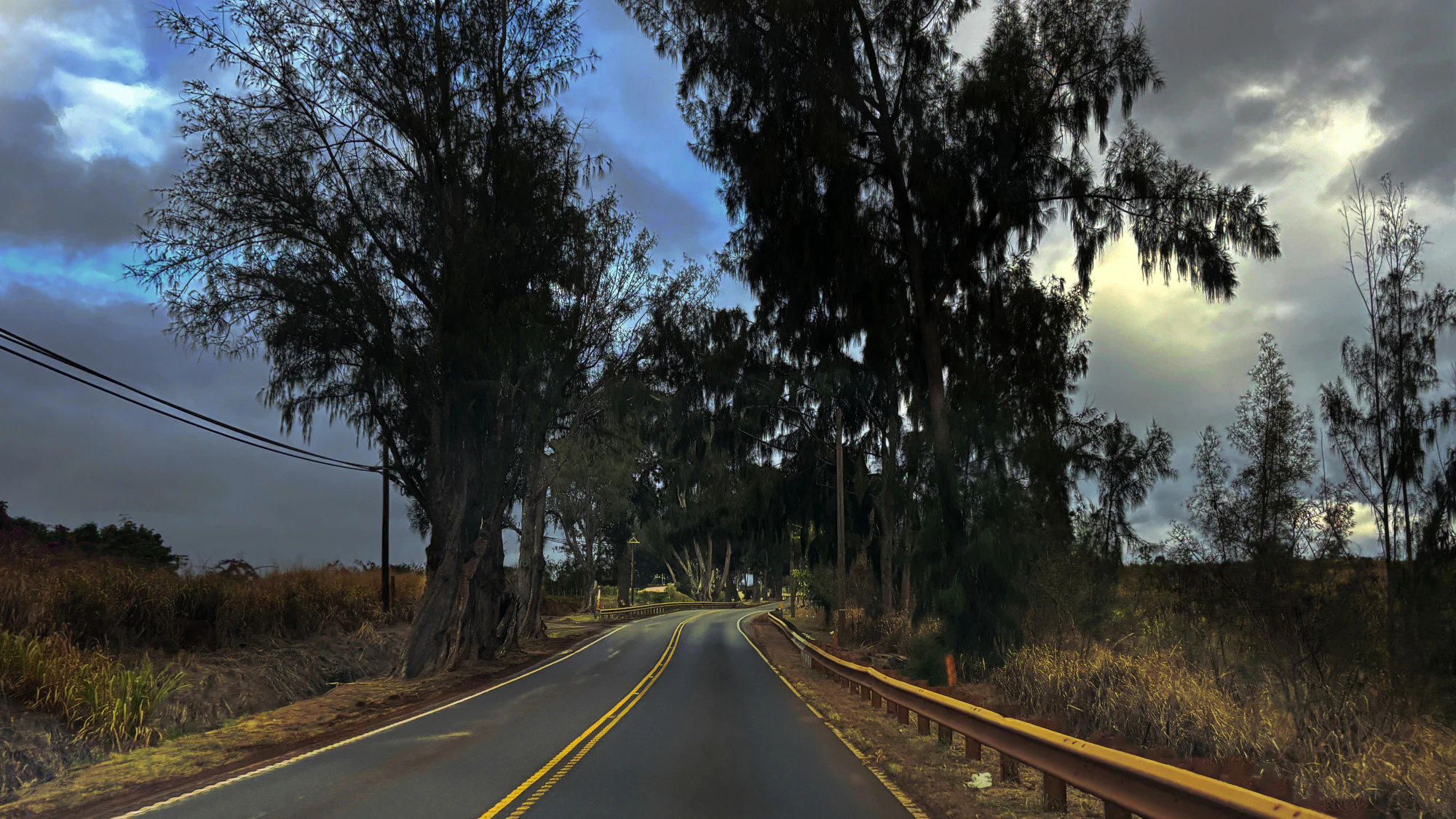Behind an ornate iron gate, adorned with gilded crowns and seals, lies Mauna ʻAla, the Royal Mausoleum of Hawaiʻi. It is the final resting place of kings, queens, princes, and princesses who once shaped the destiny of the Hawaiian Kingdom.
Today, a weathered, old kamani tree stands as a guard just behind the gates, branches reaching low across the driveway, seeming to hold back unwanted visitors. The manicured lawns roll gently across the grounds, tended with care to preserve both their beauty and gravity. The sound of birdsong and the scent of flowers invoke a sense of calm and dignity.
But beneath the tranquility, the ‘āina, the land, whispers stories upon the breeze. These are tales of sacred duty, moonlit processions, and a people’s most profound respect for their ali‘i.
In the Hawaiian tradition, the iwi, the bones, of aliʻi were not merely human remains; they were vessels of mana, carrying one’s spiritual essence and power. To ensure that one’s enemies could not dishonor or desecrate one’s bones, or use the iwi for their own power, the highest priority lay in safeguarding them once the ali‘i has passed. Only a few people were chosen to carefully conceal the bones of an ali‘i, an action that was veiled in secrecy and strict protocol. This tradition continued even up to the death of King Kamehameha I.
After his death in 1819, his iwi were hidden in a secret location to protect his immense mana from falling into the wrong hands. According to oral tradition, the two brothers entrusted with this sacred responsibility were Ho‘olulu and Ulumaheihei, also known as Hoapili. Both were among Kamehameha’s closest advisors and companions, chosen because of their loyalty and courage. They carried out the secret ritual of concealing his bones, and the location of his final resting place remains one of the most closely guarded mysteries in Hawaiian history.
After Kamehameha’s death, the remains of Hawaii’s subsequent ali‘i rested at Pohukaina, a sacred royal burial site, off-limits to most people, on the grounds of ʻIolani Palace. By the mid-1800s, however, Pohukaina was becoming overcrowded. Western-style coffins took up more space than the traditional burials of earlier times. King Kamehameha IV and Queen Emma envisioned a new resting place that would be both secure and fitting for the dignity of their ali‘i status. They chose a site in lush Nuʻuanu Valley, where cool mountain breezes and the sound of flowing water created a serene sanctuary. This place would be named Mauna ‘Ala.
In October 1865, the remains of 21 Ali‘i were transferred in a midnight ceremony from Pohukaina to Mauna ‘Ala. The quiet procession, lit by flickering kukui torches that cast long shadows, was flanked by the Royal Guard and led by kahu who knew the proper chants and prayers. Thousands of people accompanied the movement of their ali‘i as the silent march wound its way through the streets of Honolulu up into Nuʻuanu Valley. At the front walked King Kamehameha V himself, accompanied by his father, Governor Mataio Kekūanāoʻa, guiding the solemn parade on foot through the darkened streets.
When they reached Mauna ʻAla, the new mausoleum stood ready to accept its dignified occupants. As the caskets were placed inside, the torches were extinguished one by one until the valley was once again wrapped in darkness.
Mauna ‘Ala has a reverence about it. Whether you’re there day or night, there’s a constant haunting presence that is palpable.
Former Kahu of Mauna ‘Ala, William Kaihe‘ekai Maioho, affectionately called “Uncle Bill,” once told me that the kūpuna come out at night, and there were things he had to do to malama them. He never explained what he had to do. He never really said much more than that, but his smile shared volumes.
There’s a heaviness there that, if you’re open to it, will leave you in tears. But we don’t tell ghost stories here. There is no need because the place and the chicken skin you feel will tell you all you need to know. Here, we share the mo‘olelo of the ‘āina, of each of the ali‘i who lie in eternal repose here, of the kuleana shouldered by the one chosen to be kahu, the keeper of Mauna ‘Ala.
The kuleana of guarding ali‘i iwi did not end with the brothers Ho‘olulu and Hoapili. There have been keepers of Mauna ‘Ala since its inception. Up until 2024, the Kaihe‘ekai ‘ohana, lineal descendants of High Chief Ho‘olulu, have continued this sacred duty, serving as caretakers of Hawaii’s ali‘i. For seven generations, the Ho‘olulu family has preserved this tradition, ensuring that the resting places of Hawaii’s ali‘i remain protected, dignified, and treated with the reverence their mana deserves.
The stories of our ali‘i are never told with fear, but with reverence. For Hawaiians, the presence of the aliʻi is not something of which to be frightened. It is a reminder of the responsibility they carried, the sacrifices they made, and the enduring connection between the land, the people, and their leaders.
Mauna ʻAla is not just a cemetery. It is a place where history lives in stone and shadow, in lei placed gently at the tombs, in the quiet conversations between visitors and the spirits they honor. Descendants of the aliʻi still come to pay respects. Cultural practitioners visit to chant and offer hoʻokupu, gifts of lei, mele, or hula.
The air here is different, thick with the weight of memory.
The name Mauna ʻAla means “Fragrant Hill,” and perhaps that is fitting. For though time and politics have changed the islands, the fragrance of respect, tradition, and aloha for our aliʻi still lingers here. If you come in the daytime, you’ll realize that chicken skin, those goosebumps that run up your back, are not caused by the wind.
And perhaps, if you find yourself walking past its gates on a moonlit night, you’ll remember that torchlit procession of long ago—the one that carried Hawaii’s rulers to their final home. The flames may be gone, but their light has never truly gone out.
Mauna ‘Ala is now managed by the State of Hawai‘i as a state monument. For information on visiting, click here.
For the latest news of Hawai‘i, sign up here for our free Daily Edition newsletter!





